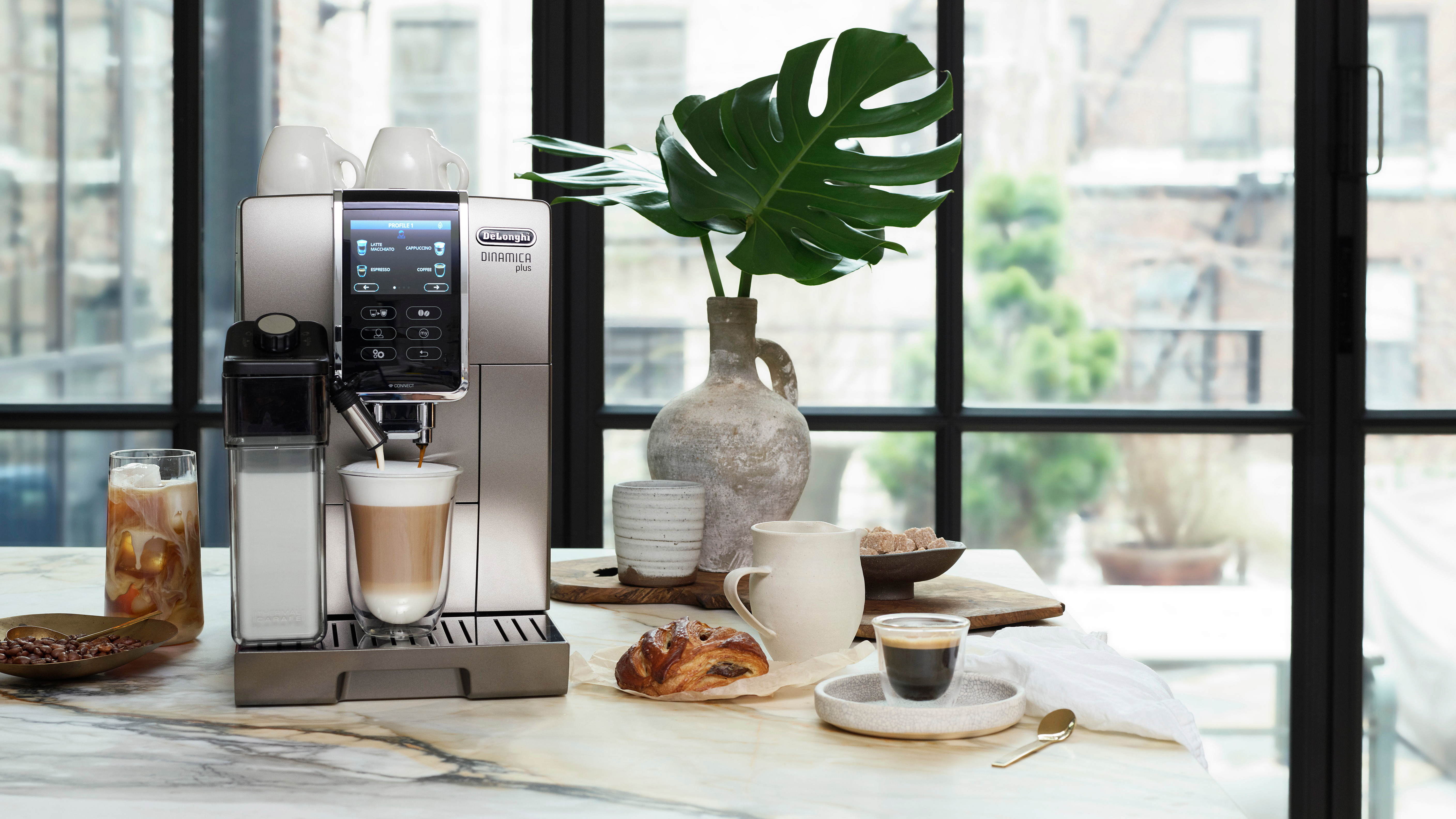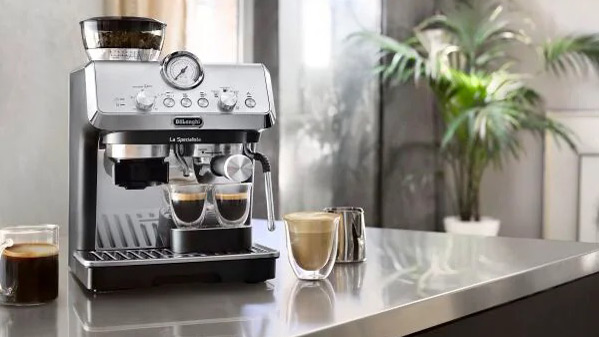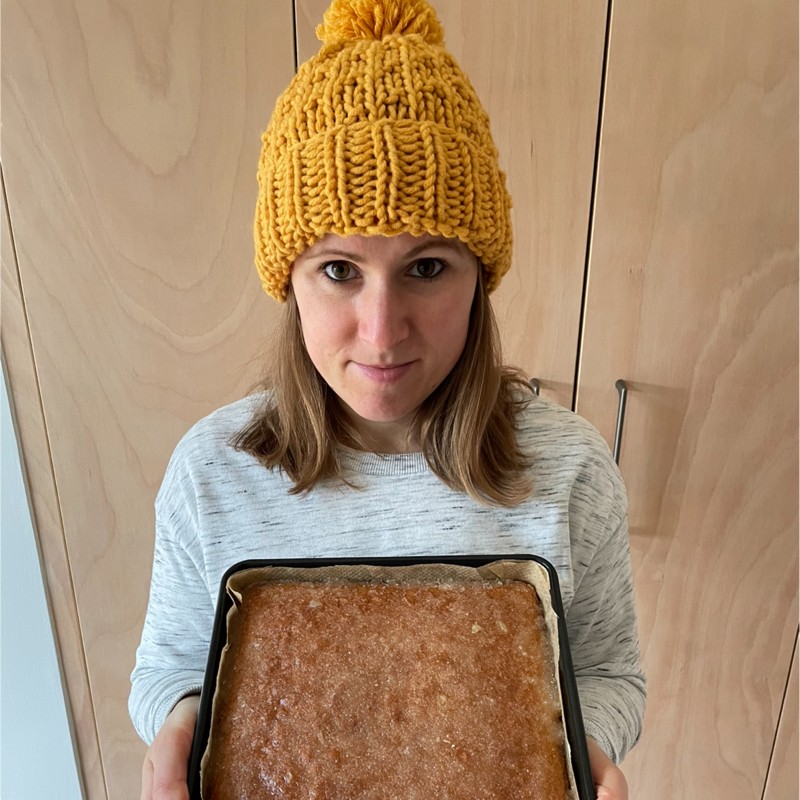Bean-to-cup coffee machines vs espresso machines: which is best for a caffeine fix?
Find out how these coffee machines differ, and which is best for you

Getting your daily caffeine fix is an absolute necessity for many of us. Life without coffee just doesn’t bear thinking about. For some people, making the perfect coffee is a slow and considered morning ritual that’s as enjoyable as drinking the beverage itself. For others, coffee is the goal, and making it is an inconvenience that needs to be as speedy and hassle-free as possible.
There’s a myriad of ways to prepare your coffee, but if you’re reading this you’ve probably already decided you want a machine that can produce Italian-style espresso-based coffees, as opposed to a classic drip coffee machine or French press.
So when it comes to coffee makers that can deliver smooth intense espresso or make delightfully frothy cappuccino, is there much difference? Here we’re explaining exactly how bean-to-cup coffee machines differ from espresso machines, as well as letting you know the pros and cons of each style, so you can decide which is best for you.
Best bean-to-cup coffee machine deals
Read on to find out just how bean-to-cup coffee machines differ from espresso machines, or if you want to get your hands on one of the best bean-to-cup machines now, check out these great deals for some of the best prices on the market.
What’s the difference between and espresso machine and a bean-to-cup machine?
At their core, both these machines are designed to deliver rich smooth espresso for barista-style coffee drinks at home. The two main differences are that bean-to-cup machines take whole coffee beans and deliver drinks at the touch of a button, whereas espresso machines require pre-ground coffee, and you’ll have to hone your barista skills, because the drink-making process is more hands-on.
Bean-to-cup machines take whole coffee beans and automatically grind them to order each time you select a coffee. The machine then takes the coffee grinds, compresses them into a coffee puck, and passes pressurized hot water through this to deliver espresso.
There are two main types of bean-to-cup coffee machine, the fully automated ones will texturize milk and create drinks such as cappuccino and latte at the touch of a button. The second type is less automated, it will still grind coffee beans, but can only pour black coffee such as espresso or americano. These machines usually feature a manual steam wand, so you’re in charge of steaming and texturizing milk for milk-based coffees.
Get daily insight, inspiration and deals in your inbox
Sign up for breaking news, reviews, opinion, top tech deals, and more.
Espresso machines take ground coffee, so it’s your choice whether to buy a bag of ground coffee or use a grinder to grind the beans yourself. These coffee machines have more in common with the coffee machine used by the barista at your local coffee shop, they’re just on a more domestic scale.
So just like your barista, you’ll have to fill what’s known as a portafilter with ground coffee, compress it in a process known as tamping, then position it into the holder. Usually, these machines can only deliver espresso and you can choose between a single or double shot. A manual steam wand on the side of the machine allows you to get creative with milk, heating, and frothing it to the perfect texture so you can create your favorite coffee shop drink.

What are the pros and cons?
There are a lot of pros to bean-to-cup coffee machines, undoubtedly coffee made from freshly ground beans will give you the best flavor coffee, but you won’t have to get a grinder out and spend time doing it yourself. These machines offer the ultimate in convenience, with an on-screen menu of coffee shop favorites delivered straight into your cup. You can enjoy barista style drinks at the touch of a button, no skill needed.
Bean-to-cup machines aren’t for everyone though, some people prefer a more hands-on approach and want to be able to tweak aspects of the drink more than is possible purely through adjusting settings on the machine. Additionally, the price may put you off, they’re more expensive than espresso machines and can reach eye watering prices as high as $2500/ £1999/ AU$4299. They’re also big, while an integrated bean grinder and automatic milk frother makes for a convenient hands-off coffee machine, it means they’re bigger and bulkier than a simple espresso machine.
Espresso machines on the other hand are smaller and if you’re short on counter space, there are some compact models available that perform well and take up a fraction of the space of bean-to-cup machines. As you’d expect, these machines are also cheaper, you can pick one up for less than $350/ £200/ AU$400.
You will have to master some barista skills to create the perfect drink when using an espresso machine. And depending on your point of view, this can be either a positive or a negative. While some people will enjoy learning to create the perfect coffee with expertly texturized milk, others will find it too much like hard work. As we already mentioned, the best cup of coffee comes from freshly ground beans, but this means you’ll need a grinder and the time to grind your own beans before adding to the machine, which is an extra step most people could do without.

Should I buy a bean-to-cup coffee machine or an espresso machine?
Choosing between these machines will come down to several factors. Firstly, if you’re working to a tight budget then an espresso machine is the way to go, they’re much less expensive than typical bean-to-cup models.
Next, you’ll need to think about size, you might be able to afford a bean-to-cup machine, but if you haven’t got the space for one, then there’s no point considering spending the cash.
Another important thing to consider is how hands-on you want to be. Choose a fully automated bean-to-cup machine if you want fresh coffee such as cappuccino, latte or macchiato at the touch of a button. But if you want to learn barista skills and have the freedom to create custom drinks exactly as you like them, then an espresso machine is for you.
For those who want something in-between, a bean-to-cup machine with a manual steam wand will pour espresso made from freshly ground beans, but still, give you full control of heating and texturizing the milk to create your ideal barista-style coffee.
- Check out these great coffee maker deals

Helen is a freelance writer who specializes in kitchen and home appliances, and has written for some of the biggest home-related titles around. She has been reviewing small appliances, including blenders, air fryers, and vacuums for more than 15 years. When she's not busy testing the latest food and home gadgets, she enjoys DIY and gardening.